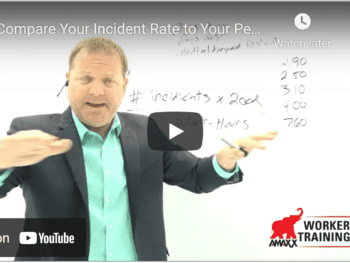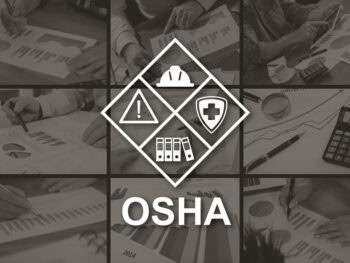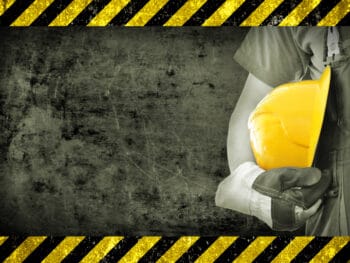
OSHA’s focus on reducing occupational injuries, illnesses, and loss of life has resulted in years of improvements in employers’ safety programs. The OSHA law requires employers to provide employees with working conditions free of known dangers or reduce them to the maximum extent possible. OSHA sets and enforces workplace safety and health standards while providing assistance and training to employers and workers.
This post is one in a 3-part series:
OSHA covers all private sector workers in the United States, the District of Columbia, and other U.S. jurisdictions. The only exceptions to this are the self-employed and family members of farm employers who do not employ non-family members. Workers who are covered by other federal agencies like the Federal Aviation Administration, Coast Guard, and Mine Safety and Health Administration are exempt from OSHA coverage, but OSHA covers most federal employees. State and local government workers are not covered by OSHA if they are in a state with an OSHA-approved state program.
Click Link to Access Free PDF Download
“4-Step Sequence For Effective Employee Screening, Hiring, & Placement”
OSHA Standards
OSHA’s protection of workers is very broad. There are OSHA standards for many things, such as:
- Exposure to harmful substances like asbestos
- Limits on the amount of hazardous chemicals a worker can be exposed to
- Indoor air quality
- Blood-borne pathogens
- Air contaminants
- Personal protective equipment
- Sanitation
- Respiratory protection
- Confined spaces
- Machine guards
- Training for dangerous jobs
- Provide protection against falls
- Preventing trench cave-ins
- Preventing infectious diseases
- Guarding floor and wall openings
- Communication about hazards
- Industrial trucks
These are a few of the many safety standards OSHA has created and required of employers. If there is not a specific standard set for a hazardous condition, there is also the General Duty Clause of the OSHA act requiring employers to keep their workplace free of hazardous conditions.
Employer Responsible for Finding and Correcting Safety and Health Hazards
The employer is responsible for finding and correcting safety and health hazards. The employer is also required to:
- Keep accurate records of work-related illnesses and injuries
- Inform employees about hazards through training, safety programs, alarms, labels, color-coded systems, hazard information sheets, etc.
- Post-OSHA citations, injury and illness data, and the OSHA poster in areas where employees will see them
- Provide hearing tests or other medical tests required by OSHA
- Perform tests in the workplace, such as air sampling
- Notify OSHA of all work-related deaths or of any accident where employees go to a hospital
- To not retaliate or discriminate against an employee for filing an OSHA complaint
The bad reputation associated with OSHA comes from its ability to make an unannounced inspection on the employer. The OSHA Act gives the workers the right to file a complaint and request OSHA inspections when they believe there is a hazardous condition in their workplace. A worker can tell OSHA not to disclose to the employer who filed the request for the inspection or the complaint. While the intent of the anonymous complaint procedure was to protect the employee from retaliation from the employer, it has led to a lot of abuse by disgruntled workers and labor unions trying to force their negotiation positions on the employers.
OSHA Citations and Fines
The OSHA inspector can issue citations and fines when there is a legitimate complaint. The citation includes the methods an employer must use to correct the situation and the date by which the corrections must be made. The employer has the right to challenge whether or not there is a violation of safety standards or any other part of the citation. Employees only have the right to challenge the date the corrections must be made.
The employee who files a complaint or a request for an OSHA inspection can allow OSHA to disclose who he is. If the employer knows who requested the OSHA inspection or filed the complaint, the law specifically states the employer cannot punish, discriminate or retaliate against the employee. The employee cannot be fired, demoted, denied a raise, transferred, or reduced work hours.
The employer who complies with all the OSHA safety standards has little reason to be concerned about OSHA. If the employer has questions about whether or not they are in compliance with OSHA standards, they can request OSHA to provide safety guidelines and assistance.
Utilizing OSHA to improve your safety program is a great way to reduce your cost for workers’ compensation. We can also help you with your safety program through our safety manual. We will be glad to assist you in creating a safer workplace.

Contact: mstack@reduceyourworkerscomp.com.
Workers’ Comp Roundup Blog: http://blog.reduceyourworkerscomp.com/
©2022 Amaxx LLC. All rights reserved under International Copyright Law.
Do not use this information without independent verification. All state laws vary. You should consult with your insurance broker, attorney, or qualified professional.
















